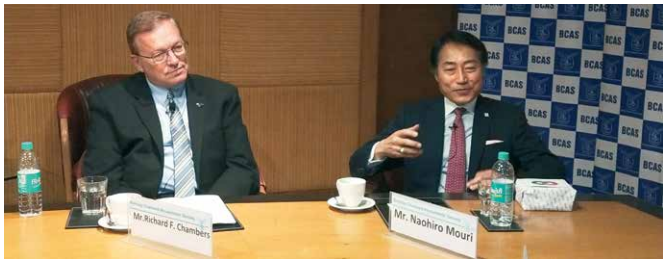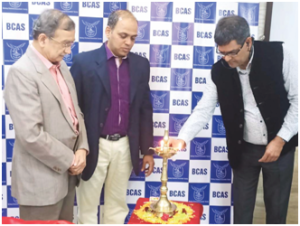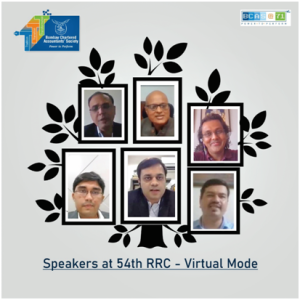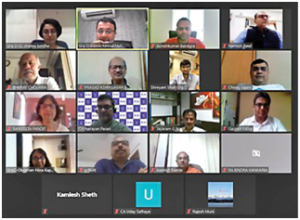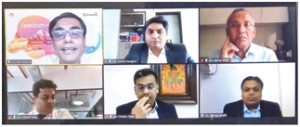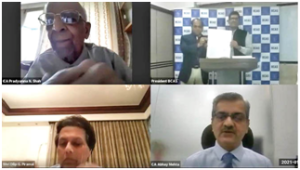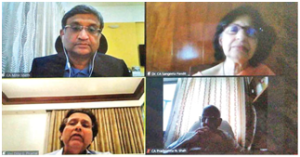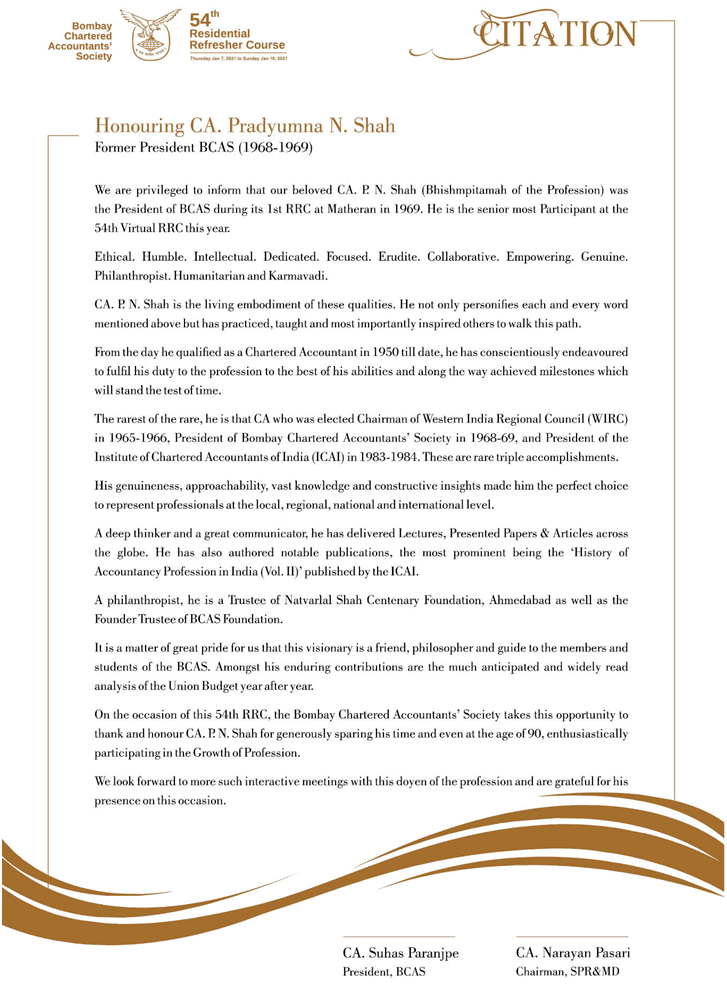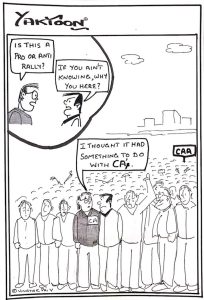This article summarises the key
additions/ modifications made in the 2017 Guidelines as compared to the earlier Guidelines. The first part of the
article, published in the December issue of the Journal, discussed about the
general guidance contained in Chapters I to V of the new Transfer Pricing
Guidelines issued in 2017 (2017 Guidelines). This part of the article deals
with guidance relating to specific transactions:
? Chapter VI – Special
Consideration for Intangibles
? Chapter VII – Special
Considerations for Intra-Group
Services,
? Chapter VIII – Cost
Contribution Agreements, and
? Chapter IX – Business
Restructurings
1. Chapter
VI – Special Considerations for Intangibles
The 2017 Guidelines
have broadened the concept of ‘intangibles’ for transfer pricing purposes, and
also provide detailed guidance on intangibles including several aspects of
intangibles not addressed in the earlier guidelines. The key differences are
discussed in this section.
1.1. Definition of
intangibles
The 2017 Guidelines
provide that the word ‘intangible’ is intended to address something which is not
a physical asset or a financial asset, which is capable of being
owned or controlled for use in commercial activities and whose
use or transfer would be compensated had it occurred in a transaction between
independent parties in comparable circumstances.1 The 2017
Guidelines provide that intangibles that are important to consider for transfer
pricing are not always recognised as intangible assets for accounting purposes
and the accounting or legal definitions solely may not be relevant for transfer
pricing.
___________________________
1 Refer para 6.6 of 2017 Guidelines
The 2017 Guidelines discuss that distinctions are sometimes sought to be
made between (a) trade and marketing intangibles2 (b) soft and hard
intangibles (c) routine and non-routine intangibles and between other classes
and categories of intangibles, but the approach to determine arm’s length price
does not depend on such categorisations.3 An illustrative list of
intangibles is also provided in the 2017 Guidelines. The Guidelines also
provide that factors such as group synergies and market specific
characteristics are not intangibles, since they cannot be owned or controlled
by any one entity in the group.
1.2. Framework for transfer
pricing analysis of transactions involving intangibles
Like any other transfer pricing matter, analysis of cases involving
intangibles should be in accordance with principles outlined under Chapter I to
III of the 2017 Guidelines. The Guidelines provide for a similar six-step
framework for analysing transactions involving intangibles.4

________________________________________________
2 Marketing Intangible and Trade Intangible
have also been defined in the 2017 Guidelines.
3 Refer para 6.15 of 2017 Guidelines
4 Refer para 6.34 of 2017 Guidelines
1.3. Intangible ownership and
contractual terms relating to intangibles
The 2017 Guidelines
specifically provide that legal ownership does not necessarily confer the right
to returns generated from the intangible. The Guidelines give an example of an
IP Holding Company which does not perform any relevant functions, does not
employ any relevant assets and does not assume any relevant risks. The
Guidelines provide that such party will be entitled to compensation, if any,
only for holding the title to the IP, and not in the returns otherwise
generated from the IP. The returns from the intangible, even though they accrue
initially to the legal owner of the intangible, will need to correspond to the
functions performed, assets employed and risks assumed by the different
entities in the group.
1.4. Functions, Assets and
Risks relating to Intangibles
1.4.1. Functions
The 2017 Guidelines
provide that determining the party controlling and performing functions
relating to DEMPE of intangibles is one of the key considerations in
determining arm’s length conditions for the controlled transactions.
In case some
functions are outsourced, if the legal owner neither performs nor controls the
outsourced functions relating to the DEMPE of intangible, it would not be
entitled to any ongoing benefit attributable to the outsourced functions.
Depending on the facts, the return for entities performing and controlling such
functions may comprise a share of the total return derived from exploitation of
the intangible.
1.4.2. Assets
The 2017 Guidelines
provide for considering important assets and specifically identify intangibles
used in research, development or marketing, physical assets and funding.
Unlike the earlier
guidelines, there is a detailed discussion in the 2017 Guidelines on funding,
and returns corresponding to funding. The Guidelines provide that funding
returns from intangibles would depend on the precise functions performed and
risks undertaken by the funder. An entity providing funding but not controlling
risks or performing functions relating to the funded activity would be entitled
to lesser returns than an entity which also performs and controls important
functions and controls important risks associated with the funded activity.
In the context of
funding, the Guidelines distinguish between financial risks (risks relating to
funding/ investments) and operational risks (risks relating to operational
activities for which the funding is used). If the investor controls the
financial risk associated with the provision of funding, without the assumption
of operational risks, it could generally expect only a risk-adjusted return on
its investments.
1.4.3. Risks
The 2017 Guidelines
specifically identify risks relating to transactions involving intangibles,
such as risks related to development of intangibles, risk of product
obsolescence, infringement risk, product liability risk, and exploitation risk.5
A detailed analysis of the assumption of these risks with respect to functions
relating to the DEMPE of intangibles is crucial.
The Guidelines also
provide that generally, the responsibility for the consequences of risks
materialising will have a direct correlation to the assumption of risks by the
parties to the transaction.
1.5. Actual (ex post)
Returns
The 2017 Guidelines
also discusses regarding sharing of profit/losses among group entities in case
of variation between actual (ex post) and anticipated (ex ante)
returns.
The 2017 Guidelines
provide that the entitlement of the group entity to the variation depends on
which party assumes the risks identified while delineating the actual
transaction. The entitlement also depends on performance of important functions
or contributing to control of economically significant risks, and for which an
arm’s length remuneration would include a profit-sharing element.
1.6. Illustration on
application of arm’s length principle in certain specific fact patterns
The 2017 Guidelines
identify specific commonly found fact patterns and provide useful guidance on
those and provide detailed guidance on these situations. These are briefly
discussed in this section.
1.6.1. Marketing intangibles
The 2017 Guidelines
discuss a common situation where a related entity performs marketing or sales
functions that benefit the legal owner of the trademark – through marketing
arrangements or distribution/marketing arrangements.6
___________________________
5 Refer para 6.65 of 2017 Guidelines
The Guidelines
provide that such cases require assessment of:
? Obligations
and rights implied by the legal registrations and agreements between the
parties;
? Functions
performed, assets employed and risks assumed by the parties;
? Intangible
value anticipated through the marketer/ distributor’s activities; and
? Compensation
provided to the marketer/distributor.
The Guidelines then
provide that any additional compensation for the marketer/distributor will
arise if it is not already adequately compensated for its functions through the
contractual arrangement.
1.6.2. Research, development and
process improvement arrangements
The 2017 Guidelines
provide that in cases involving contract research and development activities,
compensation on a cost plus modest mark-up basis may not reflect arm’s length
price in all cases. While determining the compensation, the Guidelines give
much weightage to the research team, i.e., including their skills and
experience, risks assumed by them, intangibles used by them, etc. Similarly,
analysis would be required in case of product or process improvements resulting
from the work of a manufacturing service provider.
1.6.3. Payment for use of company name
The 2017 Guidelines
provide that generally, no compensation should be paid to the owner of the
group name for simple recognition of group name, or to reflect the fact of
group membership. A payment would be due only if the use of the group name
provides a financial benefit to the entity using the group name. Similarly,
where an existing successful business is acquired by another business, and the
acquired business begins to use the group name, brand name, trademark, etc., of
the acquirer, there should be no automatic assumption that the acquired
business should start paying for such use of the group name and other
intangibles. In fact, in a case where the acquirer leverages the existing
positioning of the acquired business to expand to new markets, one should
evaluate whether the acquirer should pay a compensation to the acquired
business.
_________________________________
6
Refer para 6.76 of 2017 Guidelines
1.6.4. Other specific cases
The 2017 Guidelines
also provides guidance on various other specific fact patterns involving
intangibles such as transfer of all or limited rights, combination of
intangibles, transfer of intangibles with other business transactions, use of
intangibles in connection with sales of goods/ services.
1.7. Comparability factors
The 2017 Guidelines
provide detailed guidance on comparability factors relating to intangibles.
These factors should be considered in a comparability analysis especially under
the CUP Method (say, benchmarking analysis to find comparable royalty rates for
use of intangibles). The comparability factors specifically mentioned, although
not exhaustive, include exclusivity; extent and duration of legal protection;
geographic scope; useful life; stage of development; rights to enhancements,
revisions and updates; and expectation of future benefit.
Similarly, some key
risks that need to be analysed for a comparability analysis include risks
related to future development of the intangible, product obsolescence and
depreciation, infringement risks, product liability risks, etc.
1.8. Valuation of intangibles
The 2017 Guidelines
tend to favour the CUP Method and the transactional profit split method for
valuing intangibles. The Guidelines also recognise valuation techniques as
useful tools. One-sided methods including RPM and TNMM are generally not
considered reliable for directly valuing intangibles.
Use of cost-based
methods for valuing intangibles have also been largely discouraged, other than
in limited circumstances involving, say, development of intangibles for
internal business operations, especially when such intangibles are not unique
or valuable.
The Guidelines have
provided detailed guidance on the use of Discounted Cash Flow (DCF) Method or
other similar valuation methods for valuing intangibles. Having said that, the
Guidelines also caution that because of the heavy reliance on assumptions and
valuation parameters, all such assumptions and parameters must be appropriately
documented, along with the rationale for using the said assumptions or
parameters. The Guidelines also recommend taxpayers to present a sensitivity
analysis, with alternative assumptions and parameters, as part of their
transfer pricing documentation.
1.8.1. Intangibles having
uncertain valuations
In cases involving
intangibles the valuation of which is highly uncertain at the time of the
transaction, the 2017 Guidelines provide guidance on a much broader concept of
arm’s length behaviour. The Guidelines inter alia provide that in case
the valuation of the intangible is highly uncertain at the time of the
transaction, the parties to the transaction would potentially adopt short-term
agreements, include price-adjustment clauses, adopt a contingent pricing
arrangement, or even renegotiate the terms of the transaction in some cases.
1.8.2. Hard-to-Value Intangibles
(HTVI)
HTVIs include
intangibles for which, at the time of their transfer, (i) no reliable
comparables exist, and (ii) it is difficult to predict their level of success.
The 2017 Guidelines
make an exception regarding the use of ex post results, and provide that
in certain cases involving HTVIs, and subject to certain safeguards and
exemptions, ex post results can be considered as presumptive evidence
about the appropriateness of the ex ante pricing arrangements. The
Guidelines also provide a safe harbour of 20%, within which valuation based on ex
ante circumstances should not be questioned and replaced by valuation based
on ex post results.
2. Chapter
VII – Special Considerations for Intra-Group Services
In the analysis of
transfer pricing for intra-group services, one key issue is whether intra-group
services have in fact been provided, and the other issue is, what is the
intra-group charge for such services under the arm’s length principle. Detailed
guidance has been provided in the 2017 Guidelines on various aspects in the
context of intra-group services such as shareholders’ activities, on call
services, form of remuneration, determination of cost pools, documentation and
reporting, levy on withholding tax on provision of low value-added intra-group
services.
2.1. Low Value Adding
Intra-Group Services
The 2017 Guidelines
recommend an elective, simplified transfer pricing approach relating to
particular category of intra-group services referred to as low value adding
intra-group services. Under this approach, subject to fulfilment of certain
criteria, the arm’s length price of the services would be considered to be
justified without specific benchmarking and detailed documentation of the
benefit test by the recipient.
The guidance
provided in the 2017 Guidelines are summarised below.

3. Chapter
VIII – Cost Contribution Arrangements
The 2017 Guidelines
provide that a Cost Contribution Arrangement (CCA) is a contractual arrangement
among business enterprises to share the contributions and risks involved in the
joint development, production or the obtaining of intangibles, tangible assets
or services, with the understanding that such intangibles, tangible assets or
services are expected to create benefits for the individual businesses of each
of the participants.
Two types of CCAs
are commonly encountered: (1) Joint development, production or the procurement
of intangibles or tangible assets (“Development CCAs”); and (2) Procurement of
services (“services CCAs”).
With regard to
application of arm’s length principle, the general guidance provided in the
2017 Guidelines, including the risk analysis framework, also apply to CCAs. To
apply the arm’s length principle to a CCA, it is therefore a necessary
precondition that all the parties to the arrangement have a reasonable
expectation of benefit. The next step is to calculate the value of each
participant’s contribution to the joint activity, and finally to determine
whether the allocation of CCA contributions (as adjusted for any balancing
payments made among participants) accords with their respective share of
expected benefits.
The Guidelines also
provide that the guidance provided in Chapter VI relating to intangibles and
Chapter VII relating to intra-group services also apply to CCAs, to the extent
relevant.
Further, the
Guidelines provide specific additional guidance in the following areas:
3.1. Participants
A participant must
be assigned an interest or rights in the intangibles, tangible assets or
services that are the subject of the CCA and should have a reasonable
expectation of being able to benefit from that interest or those rights. The
Guidelines discuss in detail regarding determination of participants in CCAs.
3.2. Expected benefits
In determining the
participants’ share of expected benefits, the 2017 Guidelines encourage the use
of relevant allocation keys. The Guidelines also provide that the CCA should
provide for a periodic reassessment of allocation keys. Consequently, the
relevant allocation keys may change over a period of time, and this may lead to
prospective adjustments in the share of expected benefits of the participants.
3.3. Value of Contributions
The 2017 Guidelines
recommend distinguishing between pre-existing contributions and current
contributions for the purpose of valuing them. Any pre-existing contributions
(say, any existing patented technology) should generally be valued at arm’s
length based on the general guidance provided in the 2017 Guidelines, including
the use of valuation techniques. However, any current contributions (say,
ongoing R&D activities) should be valued based on the value of the
functions themselves, rather than the potential value of the future application
of such functions.
3.4. Documentation
The 2017 Guidelines
emphasise that taxpayers should provide detailed documentation relating to CCAs
as a part of the master file. Additionally, the local file should also contain
transactional information including a description of the transactions, amounts
of payments and receipts, identification of the associated enterprises
involved, copies of inter-company agreements, pricing information and
satisfaction of the arm’s length principle. The Guidelines also provide for an
additional disclosure of management and control of CCA activities and the
manner in which any future benefits from the CCA activities are expected to be
exploited.
4. Chapter
IX – Business Restructurings
The 2017 Guidelines
contain an elaborate discussion on transfer pricing aspects of business
restructurings. Business restructuring refers to the cross-border
reorganisation of the commercial or financial relations between associated
enterprises, including the termination or substantial renegotiation of existing
arrangements.
Business
restructurings may often involve the centralisation of intangibles, risks or
functions with profit potential attached to them.
As compared to the
earlier guidelines which included conversion of full-fledged distributors or
manufacturers to low risk ones and also included transfers of intangibles, the
2017 Guidelines also include concentration of functions in a regional or
central entity with corresponding reduction in scope or scale of functions carried
out locally, as a business restructuring transaction.
The Guidelines
address two aspects of a business restructuring – i) arm’s length compensation
for the restructuring itself, and ii) arm’s length pricing of
post-restructuring transactions.
Some key additional
guidance provided in these Guidelines is discussed in this section.
4.1. Arm’s length
compensation for the restructuring itself
4.1.1. Accurate delineation of the
restructuring transaction
The general
guidance relating to arm’s length principle is applicable also for business
restructuring. The 2017 Guidelines recommend performing accurate delineation of
transactions including detailed functional analysis in pre and
post-restructuring scenarios. In doing so, the Guidelines place special emphasis
on the risks transferred as a part of the restructuring, and importantly,
whether such risks are economically significant (i.e., whether they carry
significant profit potential and hence, may explain a significant reallocation
of profit potential).
Like earlier
guidelines, one needs to also analyse the business reasons for and expected
benefits from restructuring, and other options realistically available to the
parties.
4.1.2. Transfer of something of value
The 2017 Guidelines
provide that in case physical assets such as inventories are transferred
between foreign associated enterprises as a part of the restructuring, the
valuation of such assets is likely to be resolved as a part of the overall
terms of the restructuring. In practice, there may also be an inventory rundown
period before the restructuring becomes effective, to mitigate complications
relating to cross-border inventory transfers.
Similarly, in case intangibles
are transferred as a part of the restructuring, the Guidelines provide that the
valuation of such intangibles should be done in line with the guidelines
provided for valuation of intangibles, including guidance provided for valuing
HTVIs (Chapter VI).
In case of transfer
of an activity, the 2017 Guidelines are aligned with the earlier
guidelines and provide that the valuation of such an activity should be done as
a going concern of the entire activity, rather than individual assets.
4.1.3. Indemnification for termination or substantial
renegotiation of existing arrangements
Indemnification
means any type of compensation that may be paid for detriments suffered by the
restructured entity, whether in the form of an up-front payment, of a sharing
in restructuring costs, of lower (or higher) purchase (or sale) prices in the
context of the post-restructuring operations, or in any other form.
The 2017 Guidelines
provide for consideration of the following aspects in this regard:7
? Whether,
based on facts, the commercial law supports the right to indemnification for
the restructured entity
? Whether
the indemnification clause, or its absence, is at arm’s length
? Which
party should bear the indemnification costs
Each of the above
aspects has been discussed in detail in the OECD guidelines.
4.1.4. Documentation
The 2017 Guidelines
provide for documenting important business restructuring transactions in the
master file. Further, in the local file, taxpayers are required to indicate
whether the local entity has been involved in, or affected by, business
restructurings occurring in the past year, along with related details.
4.2. Arm’s Length
compensation for post- restructuring transactions
The 2017
Guidelines, like the earlier guidelines, provide that the arm’s length
principle should apply in the same manner to restructured transactions, as they
apply to transactions which were originally structured as such.
______________________________
7 Refer para 9.79 of 2017 Guidelines
Further, there
could be inter-linkages between the restructuring and the business arrangement
post-restructuring. In these situations, the compensation for the restructuring
and for the subsequent controlled transactions could be potentially dependent
on each other, and may need to be evaluated together from an arm’s length
perspective.
5. Concluding
Remarks
The 2017 Guidelines have addressed some key
challenges faced by taxpayers with respect to the specific
transactions/situations covered in this part of the article. In several
situations, the Guidelines provide for arm’s length behaviour in principle,
considering the overall scheme of things, and not merely evaluating the price
of isolated transactions
In the Indian
context, transfer pricing for transactions involving intangibles appears to be
a significant focus area for Indian tax authorities. Analysis of control of
functions and assumption of risks vis-à-vis provision of funding in
transactions relating to intangibles is extremely pertinent in the Indian
context given India’s leading position as a preferred destination for several
MNCs for intangible creation/upgradation in verticals such as technology,
engineering, pharma, etc.; and also given the huge marketing and promotional
spend incurred by many Indian distributors. The guidance also aligns, in
principle, with the approach of valuing intangible transfers using a DCF
approach, albeit with several safeguards relating to the assumptions and
other parameters used for valuations. Overall, the guidance provided in the
2017 Guidelines is largely being implemented by tax authorities, as evidenced
by the nature of queries and depth of discussions during APAs as well as
transfer pricing audits.
Guidance on low
value adding intra-group services has already been largely implemented in the
Indian safe harbour rules.
The 2017 Guidelines also provide several
examples relating to intangibles and CCAs in Annexes to Chapters VI and VIII,
respectively. Readers are encouraged to study the examples for a better understanding
of these concepts.

